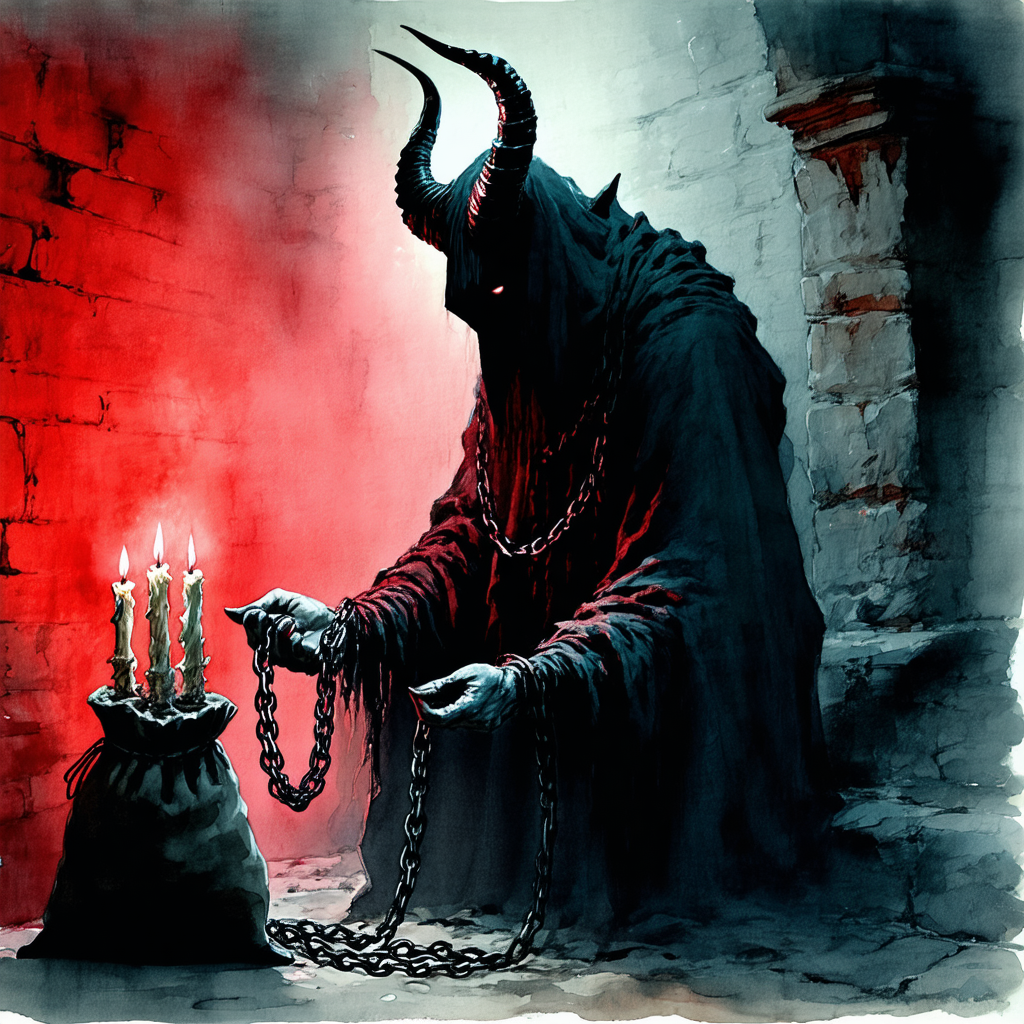When we think of Christmas, images of Santa Claus, reindeer, and jolly festivities come to mind. But in the Alpine regions of Europe, an ancient figure accompanies Saint Nicholas, balancing out the season’s joy with a menacing presence: the Krampus. This horned, goat-like creature with a taste for punishment plays a unique role in holiday folklore, adding depth and darkness to Christmas traditions. Let’s explore the origins, history, and symbolism of Krampus, drawing from historical sources and the folklore that keeps this fearsome figure alive today.
The Origins of Krampus in Pagan Europe
Krampus has deep roots in pre-Christian traditions. Historians trace his origins to ancient pagan rituals in the Alpine regions, where he likely served as a dark counterpart to the benevolent spirits of winter. The figure of Krampus has connections to Perchten, a group of spirits from Alpine folklore who appear around the winter solstice to scare off evil winter spirits. Dr. John B. Smith, an anthropologist specializing in European folklore, argues that Krampus embodies aspects of these pagan customs, specifically the reverence for nature and the need to keep malevolent spirits at bay (Smith, Folklore and Mythology Review, 1997).
Krampus’s terrifying features—horns, fangs, a long, curling tongue, and a heavy chain—are reflective of the blending of pagan and Christian elements. His image is not merely one of horror but serves as a cultural relic of the complex relationship between ancient customs and Christianity.
Krampus Enters the Christian Tradition
With the rise of Christianity in Europe, many pagan customs were integrated into Christian practices. Krampus, originally feared as a wild, chaotic spirit, was reshaped to serve a new role: a helper to Saint Nicholas. In Christian mythology, Krampus became the punisher of bad children, while Saint Nicholas rewarded the good. This contrast between good and evil allowed early Christians to incorporate Krampus into Christmas traditions without entirely abandoning his pagan roots.
During the Middle Ages, Saint Nicholas’s Feast Day on December 6th became a widely celebrated holiday in central Europe, and Krampus accompanied Nicholas on his rounds. It was believed that on December 5th, the eve of the feast day—now called Krampusnacht, or Krampus Night—the creature would roam the streets, punishing misbehaving children with whips or birch branches and sometimes even threatening to drag the truly naughty ones to his lair. This tradition served as a form of moral reinforcement, ensuring that children learned the consequences of bad behavior in a dramatic, unforgettable way.
The Symbolism of Krampus: Fear, Punishment, and Balance
The Krampus figure carries powerful symbolism within Christmas folklore. His dark, fearsome nature contrasts sharply with the warmth and joy of Saint Nicholas, reflecting a balance between light and dark, reward and punishment.
Krampus as a Morality Figure: Much like other punitive figures in folklore, Krampus serves as a reminder of the consequences of misbehavior. The act of scaring children into good behavior has roots in ancient practices, where spirits or beings from nature were invoked to maintain social order.
Krampus and the Concept of Duality: The pairing of Krampus with Saint Nicholas underscores the duality in human nature—the light and the dark. Dr. Clara Wagner, a cultural historian, interprets Krampus as a symbol of humanity’s primal fears and our need to contain those fears within societal structures (Wagner, European Myths Revisited, 2012). By “teaming up” with a saintly figure, Krampus becomes an emblem of balance: we need both order and chaos to create a complete, functioning society.
Krampus as a Symbol of Repressed Cultural Fears: In more recent interpretations, Krampus has come to represent repressed fears and the darker side of human impulses. Much like the Jungian archetype of the Shadow, Krampus personifies what society hides—our fears, our inner conflicts, and our need to acknowledge both the good and the bad within us.
The Krampus Revival: A Return to Popular Culture
After nearly fading from folklore in the 19th and 20th centuries due to church censorship and a shift toward “jolly” Christmas traditions, Krampus has seen a revival in modern popular culture. Today, Krampus festivals, or Krampuslauf (Krampus runs), are celebrated in Austria, Germany, and beyond, drawing crowds eager to witness the creature once again roam the streets. Participants dress up as Krampus, parading through towns with bells, horns, and terrifying masks in a modern-day homage to the creature.
This revival can be attributed to the recent embrace of horror themes in holiday traditions and a renewed interest in the origins of folklore. Hollywood has also fueled the resurgence of Krampus, with films and television shows bringing the legend to wider audiences. Far from the church’s attempt to suppress Krampus centuries ago, today’s celebrations accept the creature’s dark role in the holiday season as an enriching aspect of folklore.
Final Thoughts: Krampus in Modern Times
The enduring appeal of Krampus lies in his embodiment of humanity’s need for balance. As we embrace the joy and light of the holiday season, Krampus serves as a powerful reminder of the dark side that makes the light shine even brighter. His role as Saint Nicholas’s fierce counterpart reminds us that our traditions are richer when we acknowledge both the rewards of virtue and the punishments of vice. Through Krampus, we connect to the past, recognizing that sometimes, a touch of darkness is necessary to appreciate the light.
Sources:
- Smith, J. B. Folklore and Mythology Review. 1997.
- Wagner, C. European Myths Revisited. 2012.
- Dundes, A. The Evil Eye: A Casebook. University of Wisconsin Press, 1992.


